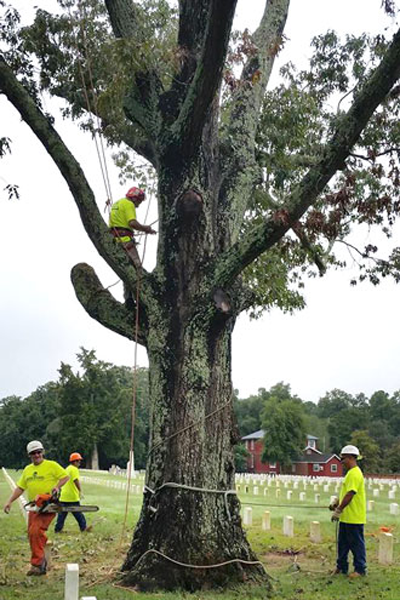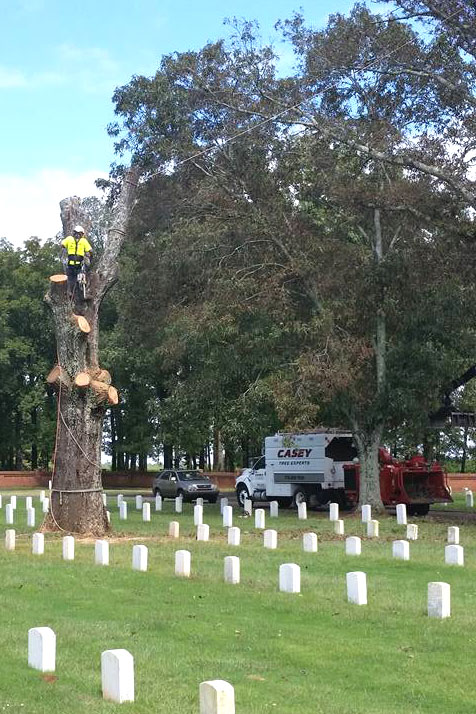(770) 498-7000
[email protected]P.O. Box 1276
Lilburn, GA 30048Office Hours: Weekdays 8am-5pm
Sales & Crew Hours: 24/7(770) 498-7000
[email protected]P.O. Box 1276
Lilburn, GA 30048Office Hours: Weekdays 8am-5pm
Sales & Crew Hours: 24/7Atlanta - the "city in the forest" - is more densely wooded than any other major US city. Our main streets are even named after trees, and beyond the Downtown, Midtown, and Buckhead business districts, the skyline gives way to a dense canopy of woods that spreads deep into the suburbs and beyond. The nickname is factually accurate, as Atlanta's tree coverage is at 36%, much higher than the national average.
Trees are such a prominent part of our everyday lives in the Greater Atlanta Area that we often forget to notice them until they are diseased, dropping branches on our houses and cars, or otherwise causing damage to our houses and infrastructure. This is when the arborists and crew at Casey Tree Experts are called in for service.
Our lead climbers and ground support technicians are highly skilled at technical ropework and rigging to dismantle even the most inaccessible trees in a controlled, experienced manner. That ability is critical when the threshold for damage to a house, turf or shrubs is zero and there is no other means of removing the tree. We can also engage one our four Bucket Trucks, which provide a stable, safe and efficient work platform, when there is space available for setup.
We may also utilize a crane to help lift encumbered trees and trunks, if no other option is viable. The boom of the crane extends over the tree, where the climber then rigs a large section to it and saws that section off while the crane operator transports the cut sections to the ground support crew for chipping or sawing.
On occasion, there are no understory or adjacent targets to avoid, and trees can be felled in their entirety or climbed and sectioned down without rope and rigging. Our ISA Certified Arborist will review all of the options and pros and cons with you to help you make an informed decision on the most efficient, safe plan of action.
No matter what the size, location or available access is, we have proven time and again that we truly are the experts at tree removal in Greater Atlanta.





Tree removal is recommended when:
-
The tree is dead or dying.
-
The tree is considered irreparably hazardous.
-
The tree is causing an obstruction that is impossible to correct through pruning.
-
The tree is crowding and causing harm to other trees.
-
The tree is to be replaced by a more suitable specimen.
-
The tree should be removed to allow for new construction.


